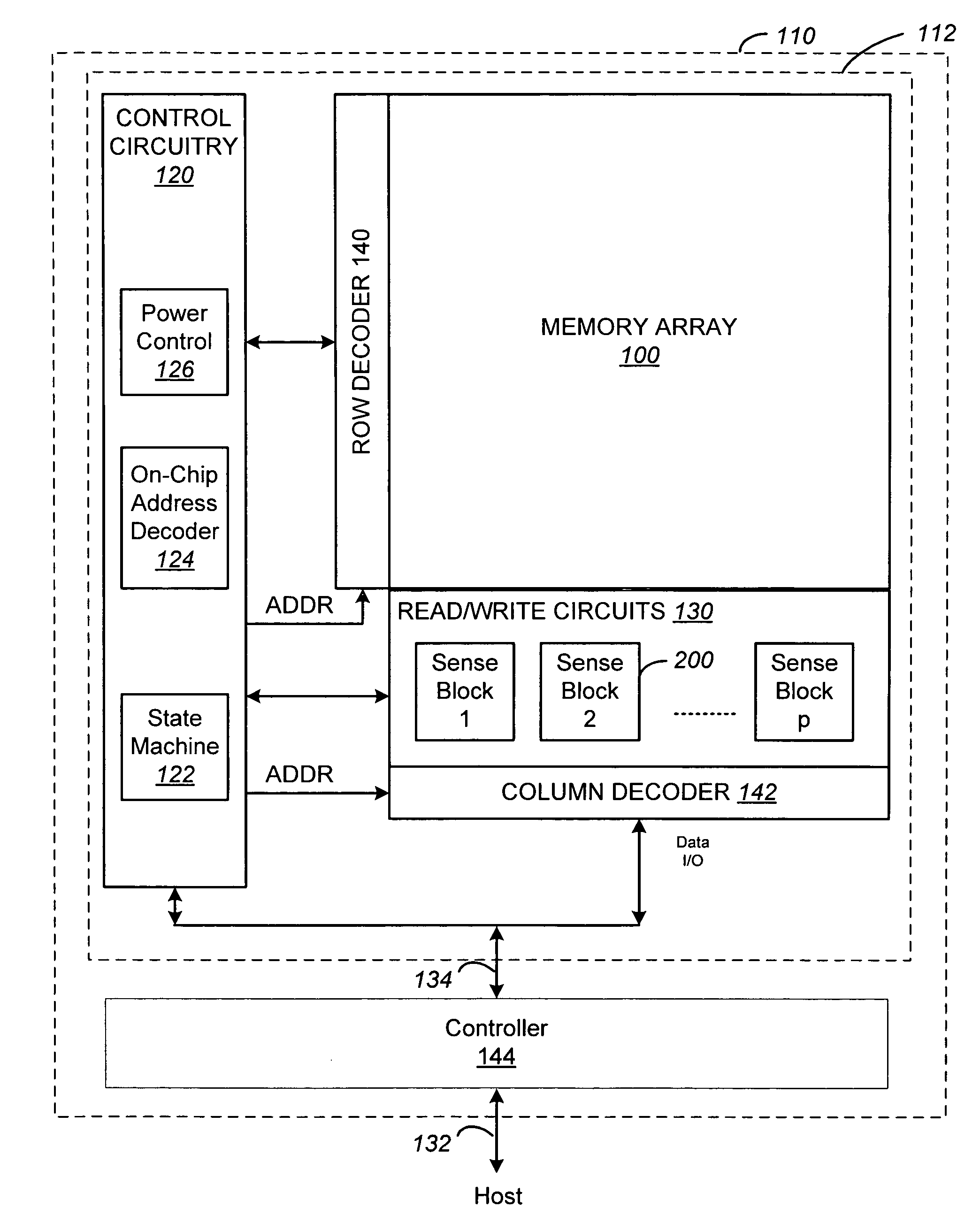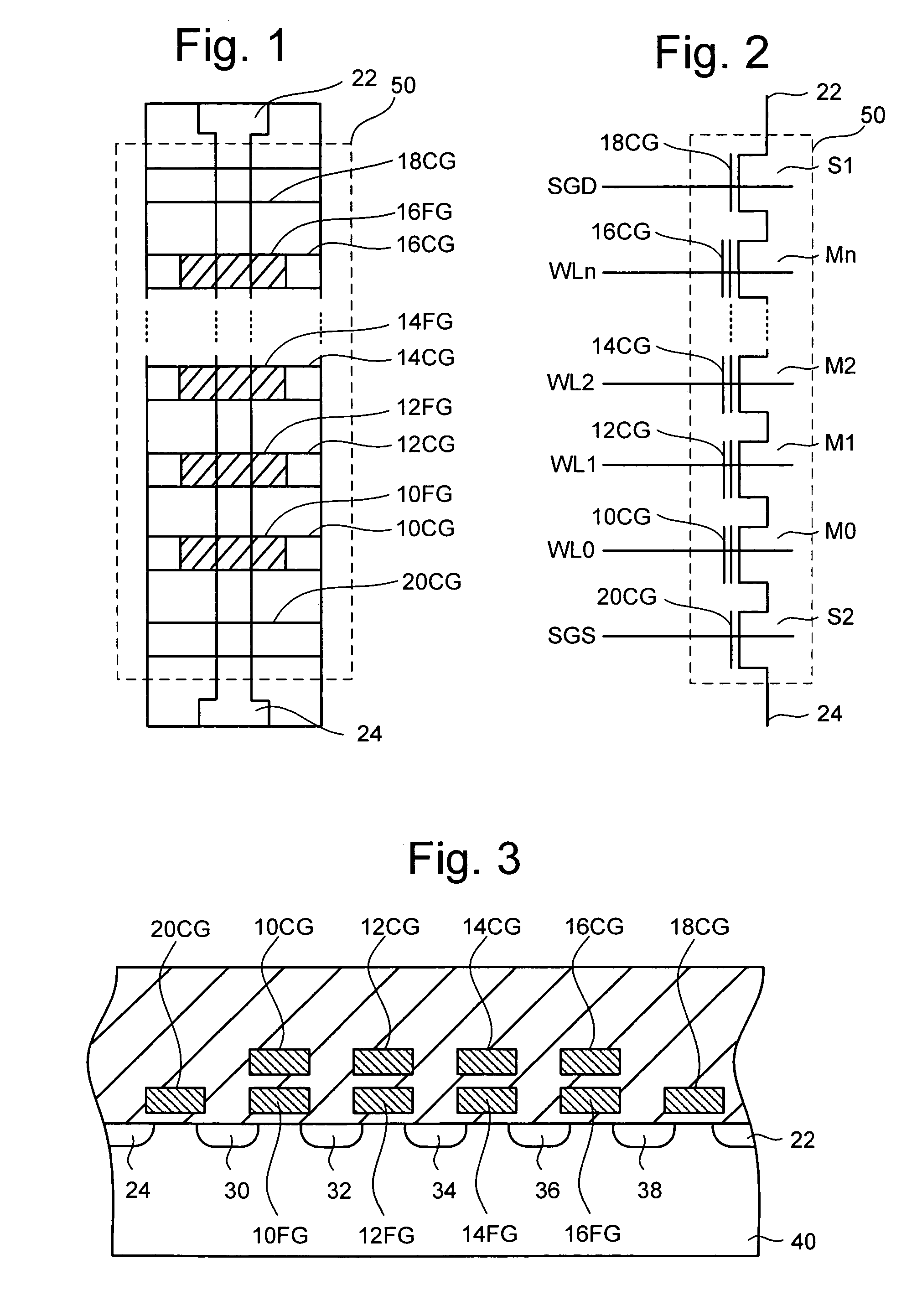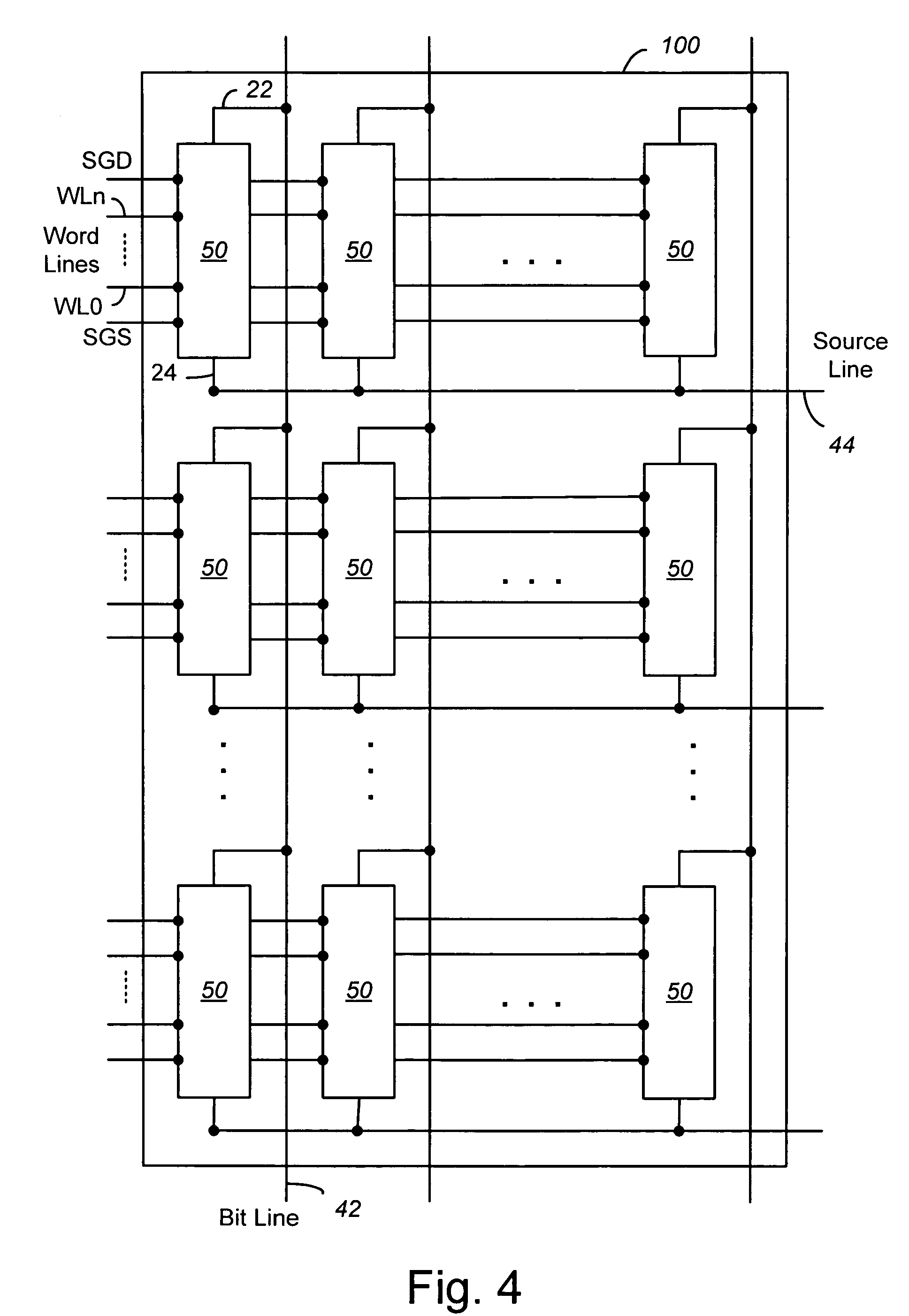Compensation currents in non-volatile memory read operations
a non-volatile memory and read operation technology, applied in the field of non-volatile memory, can solve the problems of memory cells, reducing the separation between adjacent states, and erroneous reading of data stored, and achieve the effect of increasing the apparent conduction curren
- Summary
- Abstract
- Description
- Claims
- Application Information
AI Technical Summary
Benefits of technology
Problems solved by technology
Method used
Image
Examples
Embodiment Construction
[0046] One example of a memory system suitable for implementing embodiments of the present invention uses the NAND flash memory structure, which includes arranging multiple transistors in series between two select gates. The transistors in series and the select gates are referred to as a NAND string. FIG. 1 is a top view showing an exemplary NAND string 50. FIG. 2 is an equivalent circuit thereof. The NAND string depicted in FIGS. 1 and 2 includes transistors, M0, M1, M2, and Mn, in series and sandwiched between a first select gate S1 and a second select gate S2. In one embodiment, transistors M0, M1, M2, and Mn each form an individual memory cell of the NAND string. In other embodiments, the memory cells of a NAND string may include multiple transistors or may be different than that depicted in FIGS. 1 and 2. The memory cell Mn is labeled as such to indicate that a NAND string can include any number (n) memory cells, be it less than or greater than four as depicted (e.g., 2, 8, 16,...
PUM
 Login to View More
Login to View More Abstract
Description
Claims
Application Information
 Login to View More
Login to View More - R&D
- Intellectual Property
- Life Sciences
- Materials
- Tech Scout
- Unparalleled Data Quality
- Higher Quality Content
- 60% Fewer Hallucinations
Browse by: Latest US Patents, China's latest patents, Technical Efficacy Thesaurus, Application Domain, Technology Topic, Popular Technical Reports.
© 2025 PatSnap. All rights reserved.Legal|Privacy policy|Modern Slavery Act Transparency Statement|Sitemap|About US| Contact US: help@patsnap.com



